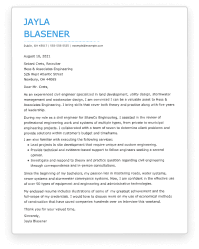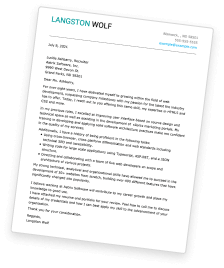Stocker Resume: Overview
As a stocker, you play a crucial role in maintaining inventory levels and ensuring shelves are properly stocked.
Your responsibilities may vary depending on the industry but typically include receiving shipments, organizing merchandise, and assisting customers.
Stockers are needed in a variety of industries, including:
- Retail stores
- Grocery stores
- Warehouses
- Manufacturing facilities
- Logistics companies
When crafting your stocker resume, highlighting key skills and qualifications is essential. Attention to detail, organizational skills, and the ability to work efficiently under pressure are highly valued in this role.
Looking to create a standout resume? Explore our collection of stocker resume examples and easy-to-use templates for inspiration.
Stocker Resume: Choose a Format
The first step to creating a winning resume is to choose a format. Choosing the right resume format can make a world of difference in how your skills and experience shine through.
There are three formats to choose from: chronological, functional or combination.
Chronological Resumes for a Stocker
If you have a solid work history as a stocker and want to highlight your career progression, a chronological resume is your best bet.
This format outlines your work experience chronologically, starting with your most recent job. It’s perfect for showcasing your relevant experience as a stock clerk.
Chronological resumes are the most popular choice because they showcase your most relevant skills and qualifications. They are also highly compatible with applicant tracking systems (ATS), increasing your chances of getting your resume into the right hands!
Functional Resumes for a Stocker
If you are just starting out as a stocker or transitioning from a different industry, a functional resume might be the right format for you.
This format focuses on your skills and qualifications rather than your work history. It allows you to highlight relevant abilities like inventory management, attention to detail, and customer service, making it ideal for showcasing your potential as a stocker.
However, functional resumes are not ATS-friendly, which may hurt your chances of getting your resume past initial screenings.
That doesn’t mean a functional resume is never the right choice, but it is important to understand this format’s limitations.
Combination Resumes for a Stocker
A combination resume blends elements of both chronological and functional resumes, allowing you to showcase key skills and qualifications while also providing your relevant work experience.
It’s a versatile option that lets you tailor your resume to highlight what matters most for the stocker position you’re applying for.
Choosing a Resume Format
When it comes to choosing the right format for your stocker resume, there’s no one-size-fits-all solution. Consider your background, experience level, and the specific requirements of the job you’re applying for.
If you’re unsure which format is best for you, experts say a chronological resume is always a good choice.
Even if you don’t have previous experience as a stocker, you can tailor a chronological resume to highlight transferable skills and qualifications.
For example, if you have previous experience in customer service, computer skills, or job duties that included maintaining cleanliness and organization, you can highlight that experience to demonstrate your qualifications as a stocker.
How to Write a Stocker Resume
Once you have chosen a resume format, you can begin crafting your resume content! There are five key sections to include in a resume for a stocker:
- Contact Information
- Summary or Objective
- Work History
- Skills
- Education
You may also provide additional sections, such as awards or certifications, as long as they are relevant to the stocker job description.
Each section of your resume plays a vital role in grabbing the attention of potential employers. Follow this helpful guide to writing a resume to learn how to make the most of each section.
Contact Information
First, you will provide your contact information so potential employers can reach out to you. Make sure this section is easy to read and find.
Include your full name, city and state, a professional email address, and a reliable phone number at the top of your resume.
For example, a contact information section for a stocker resume might look like this:
John Doe
Los Angeles, California
johndoe@email.com
555-555-5555
Double-check that your contact details are up-to-date and error-free to ensure you don’t miss out on opportunities.
Summary or Objective
Next, you will write a brief introduction for your resume. There are two approaches to this section: either a resume summary or an objective statement.
A resume summary briefly summarizes your experience, skills, and accomplishments. If you have previous experience as a stocker, it is the best choice to highlight what you bring to the table, emphasizing your track record and key strengths.
For example, an experienced stocker might write a resume summary like this:
“Dedicated stocker with 5+ years of experience in retail environments. Proven track record of maintaining inventory accuracy and optimizing stock levels. Detail-oriented with strong organizational skills.”
An objective statement, on the other hand, focuses on your career goals and intentions. It works well for someone just starting their career as a stocker.
For example, someone looking for their first job as a stocker might write:
“Driven and dedicated individual with a passion for organization and efficiency, seeking a stocker position where I can leverage my attention to detail and strong work ethic to contribute to the smooth operation of a retail environment. Eager to apply my skills in inventory management and customer service to ensure optimal product availability and customer satisfaction.”
When deciding between a summary and an objective, consider your experience level and the specific job you’re applying for.
If you have a solid work history as a stocker, a summary is best to showcase your accomplishments. However, if you’re just starting out or transitioning from a different career path, an objective statement can help clarify your intentions and aspirations to potential employers.
Whichever type of introduction you choose, tailor this section of your resume to each job you apply to. Use keywords from the job description to help your resume stand out to the ATS.
Work History
Your work history section is your opportunity to showcase your past job experiences and accomplishments. List your previous jobs, starting with your most recent position and working backward.
Each job entry should include:
- Job Title
- Employer’s Name and Location
- Dates of Employment
Then, beneath each job entry, you will write three bulleted sentences describing your responsibilities and achievements in each position.
To make this section stand out, start each bullet with a strong action verb like organized, tracked, or maintained.This makes your accomplishments more dynamic and engaging.
For example, instead of saying, “Responsible for stocking shelves,” you could say, “Maintained optimal inventory levels by restocking shelves promptly.”
Whenever possible, quantify your achievements to provide context and demonstrate your impact. Numbers and statistics grab attention and show employers the tangible results of your work.
For example, instead of saying, “Assisted customers with product inquiries,” you could say, “Assisted over 50 customers daily, resulting in increased satisfaction ratings by 20%.”
Here’s an example of how to format a work history section of a stocker resume:
Stocker (January 2020 – Present)
XYZ Retail, San Diego, CA
- Implemented efficient stocking procedures, resulting in a 30% reduction in out-of-stock incidents.
- Utilized inventory management software to track stock levels and minimize overstocking or stockouts.
- Provided exceptional customer service, promptly resolving customer complaints and inquiries to ensure satisfaction.
It’s a good idea to tailor your work history to the requirements listed in the job posting. For example, if the job description includes being able to stand for long periods, you can mention your previous experience working on your feet.
Skills
Creating a dedicated skills section on your resume is crucial for highlighting your key competencies as a stocker.
Include both hard skills, which are technical abilities specific to the job, and soft skills, which are interpersonal traits and qualities.
To help you get started, here are the top five hard skills and soft skills for a stocker resume.
Top 5 Hard Skills for Stocker Resumes
- Inventory Management: Maintaining accurate inventory records and monitoring stock levels is essential for ensuring efficient operations and minimizing stock discrepancies.
- Forklift Operation: Certification in operating forklifts and other material handling equipment demonstrates your ability to handle merchandise safely and efficiently, contributing to a smooth workflow.
- Order Fulfillment: Being skilled in processing orders and ensuring timely delivery of merchandise is crucial for meeting customer demands and maintaining customer satisfaction.
- Product Knowledge: Having extensive knowledge of various products and their placement within the store enables you to assist customers effectively and optimize shelf organization for increased sales.
- Safety Procedures: Commitment to following safety protocols not only prevents accidents and injuries but also contributes to a safe and secure work environment for yourself and your colleagues.
Top 5 Soft Skills for Stocker Resumes
- Attention to Detail: Meticulous attention to detail ensures that merchandise is properly stocked and organized, reducing errors and enhancing customers’ overall shopping experience.
- Time Management: Efficiently prioritizing tasks and meeting deadlines in a fast-paced environment is essential for maintaining productivity and keeping operations running smoothly.
- Communication: Effective communication with team members and customers ensures clear instructions are given and received, leading to improved teamwork and customer satisfaction.
- Adaptability: Being flexible in handling changing priorities and unexpected challenges allows you to adjust to evolving circumstances and maintain productivity in dynamic retail environments.
- Teamwork: A collaborative approach to working with colleagues fosters a positive work culture and enhances efficiency by pooling together individual strengths to achieve common goals.
Depending on your resume template, you can format your skills section in various ways. A typical skills section of a stocker’s resume will look something like this:
Skills
- Warehouse logistics
- Customer service
- Forklift operation
- Communication
- Order picking and processing
- Inventory
- Physical stamina
- Attention to detail
Education
Include your educational background in a separate section of your resume, listing your highest level of education first. Include the name of the school or university, the city and state where it is located, and the name of the degree or certification you received.
For example, the education section of a stocker’s resume should look something like this:
High School Diploma
Los Angeles Public High School, Los Angeles, CA
You can also include information about any licenses or certifications in this section, or you can create a separate section to highlight your unique qualifications.
Additional Sections
Once you have completed the above five sections of your resume, if space allows, consider including optional sections such as:
- Certifications
- Professional affiliations
- Volunteer experience
- Awards or Honors
Top Certifications For Stockers
Although not necessary, certifications can enhance your stocker resume and demonstrate your commitment to professional development.
Here are a couple of certifications that are highly valued in the stocker field:
- OSHA Forklift Operator Certification: Validates your ability to operate forklifts and other material handling equipment safely.
- First Aid/CPR Certification: Equips you with the skills to respond to medical emergencies in the workplace.
9 Tips For Writing A Stocker Resume
Tailor Your Resume: Customize your resume for each job application by highlighting the most relevant skills and experience that match the job requirements. This shows employers that you’re the perfect fit for the role.
Use Keywords: Incorporate keywords from the job description to optimize your resume for applicant tracking systems (ATS). These keywords help your resume get noticed by recruiters and increase your chances of getting selected for an interview.
Quantify Achievements: Whenever possible, quantify your achievements to demonstrate your impact and accomplishments as a stocker. Whether it’s reducing out-of-stock incidents or improving customer satisfaction ratings, numbers add credibility to your resume.
Proofread Carefully: Take the time to proofread your resume carefully to ensure it is free of errors and typos. A polished resume reflects your attention to detail and professionalism, making a positive impression on hiring managers.
Highlight Attention to Detail: Attention to detail and organizational skills are crucial to success as a stocker. Showcase these qualities in your resume by providing specific examples of how you’ve maintained inventory accuracy and kept shelves neatly organized.
Showcase Efficiency: Stockers often work under pressure and in fast-paced environments. Highlight your ability to work efficiently and effectively, even in challenging situations, to demonstrate your value to potential employers.
Emphasize Customer Service: Interacting with customers is a crucial aspect of the stocker role. Highlight your customer service skills, such as assisting customers with product inquiries and ensuring their satisfaction, to show employers that you’re customer-focused.
Keep it Clean and Professional: Keep your resume format clean and professional, using bullet points for easy readability. A well-organized resume makes it easy for employers to scan and assess your qualifications quickly.
Seek Feedback: Don’t hesitate to seek feedback from mentors, colleagues, or professional resume writers to improve your resume’s effectiveness. Fresh eyes can provide valuable insights and help you fine-tune your resume for success.
View Similar Resume Examples
Key Takeaways
- Choose the right resume format to showcase your skills and experience effectively.
- Highlight key skills such as inventory management, attention to detail, and customer service.
- Tailor your resume to each job application to increase your chances of success.
- Consider obtaining relevant certifications to enhance your qualifications further.
- Proofread your resume carefully to ensure it is error-free and professionally polished.
Use Hloom's Cover Letter Builder














